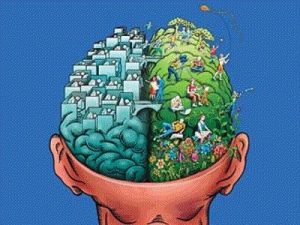Feb. 5, 2013 — Individuals who drink excessively or are alcohol dependent (AD) have reduced central serotonergic neurotransmission, which can have an impact on planning, judgment, self-control, and emotional regulation. Childhood maltreatment has also been found to have a negative impact on central serotonergic neurotransmission. A new evaluation of the impact of childhood maltreatment on central serotonergic dysfunction in AD individuals has found that self-reported childhood emotional abuse is associated with a 90-percent reduction in central serotonergic neurotransmission in male AD individuals.
Results will be published in the May 2013 issue of Alcoholism: Clinical & Experimental Research and are currently available at Early View.
"We know that reduced central serotonergic neurotransmission may also be involved in anxiety and depressive disorders, impulsivity, and sleep disorders," said Kristina J. Berglund, associate professor at the University of Gothenburg as well as corresponding author for the study. "It is not known how long these behavioral effects last, but it is possible that reduced central serotonergic neurotransmission may recover after several years of abstinence from alcohol."
"The 'size' or 'capacity' of the serotonin system has for a long time been associated with temperament and behavior," added Lars Oreland, a professor emeritus in the department of neuroscience at the University of Uppsala. "Generally, a low serotonergic capacity has been associated with lower impulse control and higher degree of aggressiveness. Low capacity can either be of advantage where risk-taking or extraversion is beneficial, or a disadvantage involving an increased risk of antisocial behaviour, drug abuse, vulnerability for depression, and alcoholism."
Oreland said that a low serotonergic capacity can be the result of mainly two factors: genetic inheritance and the environment. "When those two factors interact, the result is greater than just addition," he said. "Several studies indicate that environmental factors affect the activity of genes, irreversibly in the individual, by so called epigenetic mechanisms. This means that chemical groups are attached to the DNA, or other components of the chromosome, as an effect of life-events, especially early ones. Early adverse life events or chronic stress might induce such mechanisms by way of an effect of increased levels of the stress hormone, cortisol."
"This is the first study to look at the effects of central serotonergic dysfunction of both AD and childhood maltreatment in humans," noted Berglund.
She and her colleagues recruited 18 adult men with an AD diagnosis from outpatient treatment units. Central serotonergic neurotransmission was assessed by a prolactin response to the selective serotonin reuptake inhibitor citalopram. Childhood maltreatment was assessed retrospectively through use of the Childhood Trauma Questionnaire (CTQ).
"We found that self-reported maltreatment, particularly emotional abuse, is associated with a dramatic reduction -- 90 percent -- in central serotonergic neurotransmission in male AD individuals," said Berglund. "Emotional abuse was defined according to the established and often used CTQ, and includes verbal insults and derogatory words such as lazy, ugly, and stupid."
"The authors have used a reliable method for estimating serotonin capacity, the prolactine hormone in the blood," said Oreland. "This simple but very clever approach by the authors was also a more sensitive method than previously used, which might better reflect serotonergic capacity in brain areas with a greater sensitivity for decrease/damage, possibly due to epigenetic effects, that have been induced by adverse life events."
Both Berglund and Oreland were surprised by the dramatic nature of the findings.
"Such a dramatic effect, or rather, a high order of magnitude of early adverse life events, is indeed almost shocking," said Oreland. "It is tempting to speculate that the method used by the authors happened to pinpoint the exact spot where hormonal, here prolactine, regulation and central serotonin sensitivity for childhood maltreatment converge on a certain area in the brain."
"It is already known that childhood trauma may increase the risk for various psychiatric disorders, including AD, and that dysfunction in central serotonin neurotransmission may also increase the risk for psychiatric disorders," said Berglund. "The contribution of our findings is that there seems to be a strong relationship between childhood trauma and dysfunctional serotonin neurotransmission in AD individuals. While the mechanism behind this relationship is still unknown, it would be wise for a clinician to assess for possible childhood trauma since the combination of childhood trauma and excessive alcohol intake seems to be extremely deleterious for brain."
Both Berglund and Oreland noted the small number of patients in this study and recommended future research. "It would be interesting to examine how the combination of childhood maltreatment and genetic constitution on central serotonergic function might lead to the development of a certain type of alcoholism, as there are several ways of classifying alcoholism," said Oreland.










